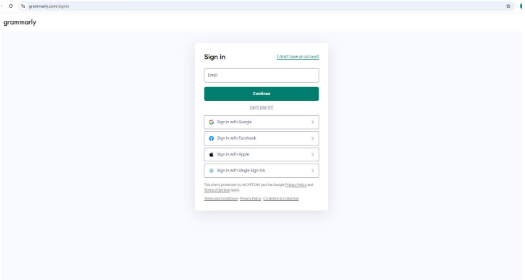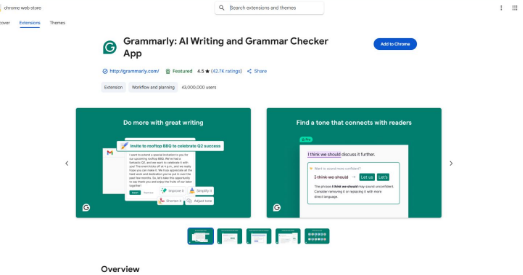Grammarly’s plagiarism checker scans over 16 billion web pages and academic databases. Accessing this feature requires a Premium subscription, and the process can be done on desktop, mobile, and web versions.
This guide provides step-by-step instructions for running plagiarism checks across all Grammarly platforms, plus how to properly interpret your results, fix detected issues, and troubleshoot common problems.
We’ll also cover whether Grammarly’s plagiarism detection is reliable enough for academic and professional use, helping you make informed decisions about your content’s originality.
What You Need To Get Started To Check Plagiarism On Grammarly
You can’t use Grammarly’s plagiarism checker for free. You need Grammarly Pro (formerly Premium), which costs $12/month when billed annually or $30/month when billed monthly.
The plagiarism feature works across multiple platforms:
- Grammarly web editor
- Google Docs with browser extension
- Microsoft Word with desktop app
- Mac applications
How to Check For Plagiarism In Grammarly? (3 Methods)
There are three main ways to do this, depending on where you’re writing.
Method 1: Using Grammarly Web Editor
This is the easiest and most comprehensive way to check for plagiarism.
Step 1: Open Grammarly Editor
Go to app.grammarly.com and log in with your Pro account credentials.

Step 2: Add Your Content
Click “New” to start writing from scratch. Or click “Upload” to check an existing Word document or PDF file. You can also copy and paste text directly into the editor.

Step 3: Start The Plagiarism Scan
Look for the “Plagiarism” option in the left sidebar and click on it. The scan typically takes 1-2 minutes, depending on your document length.

Step 4: Review Your Results
Check your originality score at the top of the results panel. Look for text highlighted in red – these are potential matches found online. Click on any highlighted text to see the specific sources where matches were detected

Method 2: Using Google Docs
You can check plagiarism directly in Google Docs using Grammarly’s browser extension.
Step 1: Install Browser Extension
Add the Grammarly extension to Chrome from the Chrome Web Store. Open your Google Doc once the extension is installed.

Step 2: Activate Grammarly
Click the Grammarly icon in your browser toolbar. Toggle on “Grammarly for Google Docs” to enable the feature.

Step 3: Run Plagiarism Check
Click the Grammarly icon that appears inside your document. Select “Plagiarism” from the menu options and wait for the scan to complete.

Method 3: Using Microsoft Word
If you prefer writing in Microsoft Word, you can use Grammarly’s desktop app to check for plagiarism.
Step 1: Install Desktop App
Visit grammarly.com/native and download the Grammarly desktop application. Install it and sign in with your Pro account.

Step 2: Check Plagiarism in Word
Open your Word document – Grammarly will automatically activate. Click the “Plagiarism” button in the Grammarly panel to start scanning.

Understanding Your Plagiarism Results
Grammarly shows you similarity percentages and highlights matching text, but not all matches are actual plagiarism problems.
1. What Your Score Means
Your originality score shows the percentage of unique content in your document. An 85% score means 15% of your text matches other sources online.
There’s no perfect score – it depends on your content type. Academic papers with many citations will naturally have lower scores than creative writing.
2. Don’t Panic Over Common Phrases
Grammarly flags everything to be safe, including normal phrases like “in conclusion” or “according to research.” Use your judgment – not every highlighted section is actual plagiarism.
3. Check the Source Details
Click on flagged text to see where matches were found. Sometimes it’s your own previously published work, which isn’t plagiarism. Academic sources are more concerning than random blog matches.
How to Fix Plagiarism Issues
Once you find matching text, you can use three main options to fix it properly.
1. Add Proper Citations
If you used someone else’s ideas or research, add citations with the author’s name and publication year. Include a reference list at the end of your document.
2. Rewrite in Your Own Words
Change the sentence structure completely while keeping the same meaning. Use different vocabulary and phrasing. Always cite the original source even when paraphrasing.
3. Use Quotation Marks
Put exact quotes in quotation marks and keep them short. Don’t quote entire paragraphs – summarize instead. Always include the source citation for quoted material.
Is Grammarly’s Plagiarism Checker Accurate?
Grammarly’s plagiarism checker is quite reliable, but it’s not 100% perfect. It scans over 16 billion web pages and academic databases to find matches.
1. What It Does Well
The tool catches most copied content from websites, academic papers, and published articles. It’s especially good at finding exact matches and close paraphrases.
2. Where It Falls Short
Grammarly might miss content from private databases or very recent publications. It also flags common phrases that aren’t actually plagiarism.
The tool sometimes shows false positives for your own previously published work. Always review flagged content yourself before making changes.
3. How Accurate Is Grammarly Plagiarism Checker?
Most experts rate Grammarly’s plagiarism detection at about 85-90% accuracy. This makes it reliable enough for most students and professionals.
For critical academic work, consider using it alongside other plagiarism checkers like Turnitin or Copyscape for double verification.
Common Problems And Solutions Regarding Grammarly Plagiarism Checker
Even with a premium subscription, users sometimes face issues like missing features, inaccurate flags, or confusing results, here’s how to handle the most common ones.
Why Is Grammarly’s Plagiarism Checker Not Working?
Make sure you have an active Pro subscription, not the free version. Check your internet connection and try refreshing the page.
Getting Too Many False Alarms?
Review flagged content carefully – common phrases aren’t real plagiarism. Check if you’ve already cited sources properly. Some matches might be from your own previous work.
Can’t Find the Plagiarism Button?
Confirm you’re logged into your Pro account. The plagiarism feature only works with paid subscriptions. Try logging out and back in if the button doesn’t appear.
Tips For Best Results In Grammarly Plagiarism Checker
Grammarly’s checker doesn’t store your documents, so you can run checks as often as needed without affecting future scans or originality scores.
1. Check Your Work Regularly
Don’t wait until you’re finished writing – scan sections as you complete them. Run multiple checks if you’re adding new research or content.
2. Keep Track of Sources
Save URLs and publication details while researching. Take notes about where you found each piece of information. Consider using citation tools like Zotero or Mendeley to stay organized.
3. Use Your Judgment
Grammarly’s plagiarism checker uses advanced AI but isn’t perfect – it flags everything to be safe. Always review flagged content yourself and decide what actually needs attention.
When in doubt, add a citation. It’s better to overcite than risk plagiarism accusations.
Related Reads:
Conclusion: Grammarly’s Plagiarism Checker Is Worth It For Original Writing
Grammarly’s plagiarism checker is a powerful tool that can save you from serious academic or professional consequences. While it costs $12/month with annual billing, this investment is worth avoiding plagiarism problems.
The key is using it regularly throughout your writing process, not just at the final stage. Remember that the tool flags everything to be cautious, so use common sense when reviewing results.
With proper citation habits and regular plagiarism checks, you can write with confidence knowing your work is original and properly attributed.
